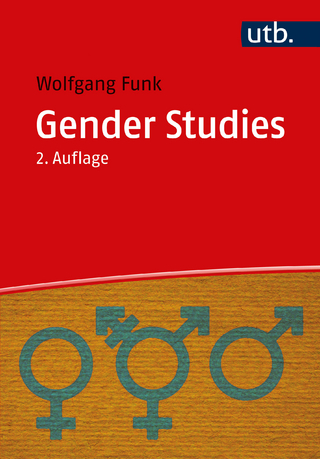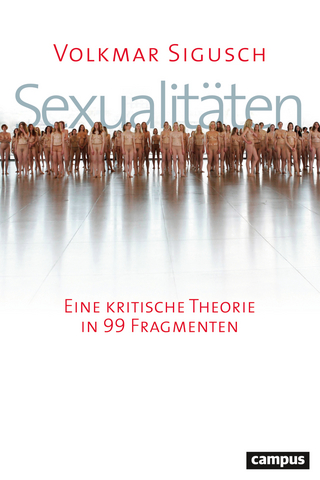
Mechanisms of Inorganic and Organometallic Reactions
Kluwer Academic / Plenum Publishers (Verlag)
978-0-306-41142-7 (ISBN)
- Titel ist leider vergriffen;
keine Neuauflage - Artikel merken
Material is arranged basically by type of reaction and type of compound along generally accepted lines. Numerical data are usually reported in the units used by the original authors, though the units of some results have been converted in order to make comparisons.
1. Electron Transfer Reactions.- 1. General Redox Processes and Reactions between Two Complexes.- 1.1. Introduction.- 1.2. General Background.- 1.2.1. General and Theoretical.- 1.2.2. Theoretical Developments.- 1.2.3. Optical Electron Transfer.- 1.3. Reaction Mechanisms.- 1.3.1. Inner-Sphere and Outer-Sphere Reactions.- 1.3.2. Solvent Effects in Electron Transfer Reactions.- 1.4. Excited State Electron Transfer.- 1.5. Stereoselectivity in Electron Transfer.- 1.6. Metalloprotein Redox Reactions.- 2. Metal-Ion-Ligand Redox Reactions.- 2.1. Introduction.- 2.2. Metal Complexes with Inorganic Substrates.- 2.2.1. Reactions of Hydrazine and Hydroxylamine.- 2.2.2. Reactions of Nitrate and Nitrite.- 2.2.3. Reactions of Thiocyanate.- 2.2.4. Reactions of Dithionite and Thiosulfate.- 2.2.5. Reactions of Iodide.- 2.2.6. Other Reductants.- 2.3. Oxidation of Organic Substrates by Metal Ion Complexes.- 2.3.1. Chromium(VI).- 2.3.2. Vanadium(V).- 2.3.3. Manganese(III) and Manganese(VII).- 2.3.4. Iron(III).- 2.3.5. Thallium(III).- 2.3.6. Iridium(IV).- 2.3.7. Cerium(IV).- 2.3.8. Cobalt(III).- 2.3.9. Bromate.- 2.3.10. Other Oxidizing Agents.- 2.4. Oxidation of Metal Ion Complexes.- 2.4.1. Iron(II).- 2.4.2. Chromium(II).- 2.4.3. Vanadium(II).- 2.4.4. Cobalt(II).- 2.4.5. Other Reductants.- 2.5. Intramolecular Electron Transfer.- 2. Substitution and Related Reactions.- 3. Reactions of Compounds of the Nonmetallic Elements.- 3.1. Introduction.- 3.2. Boron.- 3.3. Group IV Elements.- 3.3.1. Carbon.- 3.3.2. Silicon.- 3.3.3. Germanium.- 3.4. Group V Elements.- 3.4.1. Nitrogen.- 3.4.2. Phosphorus.- 3.4.3. Arsenic.- 3.4.4. Antimony.- 3.5. Group VI Elements.- 3.5.1. Oxygen.- 3.5.2. Sulfur.- 3.5.3. Selenium.- 3.5.4. Tellurium.- 3.6. Group VII Elements.- 3.6.1. Fluorine.- 3.6.2. Chlorine.- 3.6.3. Bromine.- 3.6.4. Iodine.- 4. Substitution Reactions of Inert Metal Complexes- Coordination Numbers 4 and 5.- 4.1. Introduction.- 4.2. Square-Planar Complexes.- 4.2.1. Platinum(II).- 4.2.2. Palladium(II).- 4.2.3. Nickel(II).- 4.2.4. Gold(III).- 4.2.5. Miscellaneous.- 4.2.6. Isomerization.- 4.3. Tetrahedral Complexes.- 4.4. Five-Coordinate Complexes.- 5. Substitution Reactions of Inert Metal Complexes-Coordination Numbers 6 and Above.- 5.1. Introduction.- 5.2. Chromium.- 5.2.1. Introduction.- 5.2.2. Aquation and Solvolysis of Chromium(III) Complexes.- 5.2.3. Formation of Chromium(III) Complexes.- 5.2.4. Chromium(III) Photochemistry.- 5.2.5. Isomerization and Racemization Reactions.- 5.2.6. Base Hydrolysis.- 5.2.7. Solids.- 5.2.8. Other Chromium Oxidation States.- 5.3. Group VII Elements.- 5.3.1. Technetium.- 5.3.2. Rhenium.- 5.4. Iron.- 5.4.1. Pentacyanoferrate(II) Complexes.- 5.4.2. Diimine Complexes.- 5.4.3. Other Low-Spin Iron(II) Complexes.- 5.4.4. Iron(III) Complexes.- 5.5. Ruthenium.- 5.5.1. Ruthenium(II).- 5.5.2. Ruthenium (III).- 5.5.3. Ruthenium(IV).- 5.6. Osmium.- 5.7. Cobalt(III).- 5.7.1. Aquation and Solvolysis.- 5.7.2. Base Hydrolysis and Base Solvolysis.- 5.7.3. Catalyzed Aquation.- 5.7.4. Formation.- 5.7.5. Solvent and Ligand Exchange.- 5.7.6. Racemization and Isomerization.- 5.7.7. Carbonate and Sulfite Complexes.- 5.7.8. Bis(glyoximato) Complexes.- 5.7.9. ?-Dicobalt(III) Complexes.- 5.7.10. Photochemistry.- 5.7.11. Reactions of Coordinated Ligands.- 5.8. Rhodium(III).- 5.8.1. Aquation.- 5.8.2. Base Hydrolysis.- 5.8.3. Catalyzed Aquation.- 5.8.4. Formation.- 5.8.5. Solvent and Ligand Exchange.- 5.8.6. Ring Opening and Closing.- 5.8.7. Isomerization.- 5.8.8. Carbonate and Sulfite Complexes.- 5.8.9. Bis(glyoximato) Complexes.- 5.8.10. Photochemistry.- 5.9. Iridium.- 5.9.1. Iridium(III).- 5.9.2. Iridium(IV).- 5.10. Platinum(IV).- 5.10.1. General.- 5.10.2. Inversion at Coordinated Sulfur and Selenium.- 6. Substitution Reactions of Labile Metal Complexes.- 6.1. Complex Formation Involving Unsubstituted Metal Ions with Unidentate Ligands and Solvent Exchange.- 6.1.1. Univalent Ions.- 6.1.2. Bivalent Ions.- 6.1.3. Ions of Valency 3 and Higher.- 6.2. Complex Formation Involving Unsubstituted Metal Ions and Multidentate Ligands.- 6.2.1. Univalent Ions.- 6.2.2. Bivalent Ions.- 6.2.3. Ions of Valency 3 and Higher.- 6.3. The Effects of Bound Ligands.- 6.3.1. Reactions in Water.- 6.3.2. Reactions in Nonaqueous Solvents.- 3. Reactions of Organometallic Compounds.- 7. Metal-Alkyl Bond Fission and Formation.- 7.1. Introduction.- 7.2. Metal-Alkyl Bond Fission.- 7.3. Miscellaneous Thermal Decompositions.- 7.4. Metal-Alkyl Bond Formation.- 7.5. Transalkylation.- 8. Substitution, Oxidative Addition-Reductive Elimination, and Migration-Insertion Reactions.- 8.1. Introduction.- 8.2. Substitution Reactions.- 8.2.1. Reactions Involving Carbonyls or Carbon Monoxide.- 8.2.2. Reactions Involving Di- or Multihapto Ligands.- 8.3. Oxidative Addition and Reductive Elimination.- 8.4. Migration-Insertion Reactions.- 9. Rearrangements, Intramolecular Exchanges, and Isomerization of Organometallic Compounds.- 9.1. Mononuclear Compounds.- 9.1.1. Isomerizations and Intramolecular Exchanges.- 9.1.2. Simple Ligand Rotation at a Metal Center.- 9.1.3. Ligand Motion Involving Changes in Hapiticity.- 9.1.4. Metal Migration between Different Ligand Sites.- 9.1.5. Hydrogen Migrations Involving Hydrogen Bound to Carbon.- 9.1.6. Alkyl Migration Reactions.- 9.1.7. Intraligand Rotations and Rearrangements.- 9.2. Dinuclear Compounds.- 9.2.1. Migration of CO and Related Ligands.- 9.2.2. Hydrogen Migration Reactions.- 9.2.3. Motion Involving Bridging Organic Ligands.- 9.2.4. Rotation about Metal-Metal Bonds.- 9.3. Cluster Compounds.- 9.3.1. Fluxional Metal Frameworks.- 9.3.2. Migration of CO and Related Ligands.- 9.3.3. Hydrogen Migration Reactions.- 9.3.4. Motion Involving Bridging Organic Ligands.- 10. Reactivity of Coordinated Hydrocarbons.- 10.1. Introduction.- 10.2. Nucleophilic Addition and Substitution.- 10.2.1. ?-Bonded Hydrocarbons.- 10.2.2. ?-Bonded Hydrocarbons.- 10.2.3. Reactions at Side Chains and Exocyclic Carbocations.- 10.2.4. Attack at Carbonyl Ligands.- 10.3. Electrophilic Attack.- 11. Homogeneous Catalysis of Organic Reactions by Complexes of Metal Ions.- 11.1. Introduction.- 11.1.1. Scope of the Review.- 11.1.2. Elementary Steps in Homogeneous Catalysis.- 11.2. Reactions Catalyzed by Carbene Complexes.- 11.2.1. Alkene Metathesis.- 11.2.2. Ring-Opening Polymerization by Metallocarbene Complexes.- 11.3. Hydrogenation.- 11.3.1. Introduction.- 11.3.2. Hydrogenation of Alkenes.- 11.3.3. Asymmetric Hydrogenation.- 11.3.4. Hydrogenation of Aromatic Hydrocarbons.- 11.3.5. Hydrogen Transfer Hydrogenation.- 11.4. Reactions of Carbon Monoxide.- 11.4.1. Hydroformylation.- 11.4.2. Carbonylation of Alcohols.- 11.4.3. The Homogeneous Water Gas Shift Reaction (WGSR).- 11.5. Oxidation.- References.- Author Index.- General Subject Index.
| Zusatzinfo | biography |
|---|---|
| Verlagsort | Dordrecht |
| Sprache | englisch |
| Themenwelt | Sozialwissenschaften ► Soziologie ► Gender Studies |
| ISBN-10 | 0-306-41142-3 / 0306411423 |
| ISBN-13 | 978-0-306-41142-7 / 9780306411427 |
| Zustand | Neuware |
| Haben Sie eine Frage zum Produkt? |
aus dem Bereich


